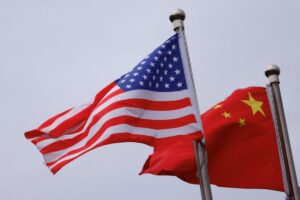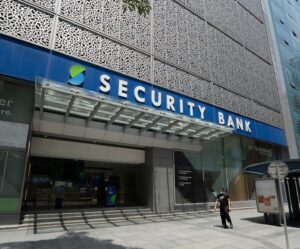
A Glimpse into the Future at Berkshire Hathaway’s Annual Meeting
The recent Berkshire Hathaway annual meeting in Omaha provided shareholders with the clearest view yet of the future leadership of the conglomerate, spotlighting Vice Chairman Greg Abel. Abel, who is set to succeed Warren Buffett as CEO, showcased his deep understanding of the business sectors under his leadership, including utilities and railroads, and his potential future role in managing the company’s investments.
The Evolution of Leadership Roles
During the meeting, Warren Buffett, the legendary 93-year-old investor, made a significant announcement, suggesting for the first time that Abel should also oversee Berkshire’s investments once he takes the helm. This marks a departure from earlier statements where Buffett indicated that investment managers Ted Weschler and Todd Combs would manage the massive portfolio. Buffett’s new stance highlights his confidence in Abel’s comprehensive understanding of business operations and his capability in capital allocation.
Demonstrating Expertise and Strategy
Greg Abel’s presentations throughout the day revealed his extensive knowledge, particularly of the utility business, which he led for many years before taking on broader responsibilities within Berkshire. He discussed the cultural shifts necessary within utility companies, especially regarding operational changes to mitigate wildfire risks. Abel also touched on the challenges at BNSF railroad, emphasizing efforts to optimize cost structures amid disappointing financial performances.
Succession Planning and Corporate Assurance
Succession was a key theme of the meeting, prompted in part by the recent passing of Vice Chairman Charlie Munger. Buffett, along with Abel and Ajit Jain—who oversees Berkshire’s insurance operations—reiterated the board’s diligent focus on succession planning. This proactive approach aims to ensure stability and continuity in leadership, which is vital for a conglomerate with the scale and scope of Berkshire Hathaway.
Stock Picking Versus Business Management
The potential shift in investment responsibilities to Abel has sparked discussions among analysts about the nuances of stock picking versus business management. While Abel has a proven track record in making significant business deals, such as the acquisitions of NV Energy and AltaLink, transitioning to direct stock selection presents a new set of challenges. Experts like Edward Jones analyst James Shanahan express concerns about the art of stock picking, which involves precise timing and sizing of positions—skills that Abel has not yet demonstrated in the public eye.
Maintaining Core Values and Operational Freedom
Executives from Berkshire’s subsidiaries, including See’s Candies and Shaw Industries, praised Abel for his leadership style, which aligns with Berkshire’s core values of integrity, customer focus, and brand strengthening. They highlighted his balanced approach, offering them operational freedom while holding them accountable, a philosophy likely to continue under his leadership.
Investor Confidence and Future Prospects
Despite potential challenges, shareholders left the meeting reassured about the future of Berkshire Hathaway under Abel’s leadership. The event also underscored Buffett’s current robustness, suggesting that while succession plans are firmly in place, the transition may not be immediate. As Berkshire continues to navigate a complex investment landscape, the focus remains on maintaining the “eye-popping performance” that has characterized its past, even as new leadership prepares to steer the company into its next chapter.
Conclusion
The Berkshire Hathaway annual meeting was not just a showcase of financial results and strategies but also a forward-looking dialogue about leadership transition. As Greg Abel steps closer to the role of CEO, the groundwork laid by Buffett ensures that the transition will align with the company’s long-standing principles and operational approach, promising continuity and stability for Berkshire Hathaway’s future.






















Comments are closed for this article!